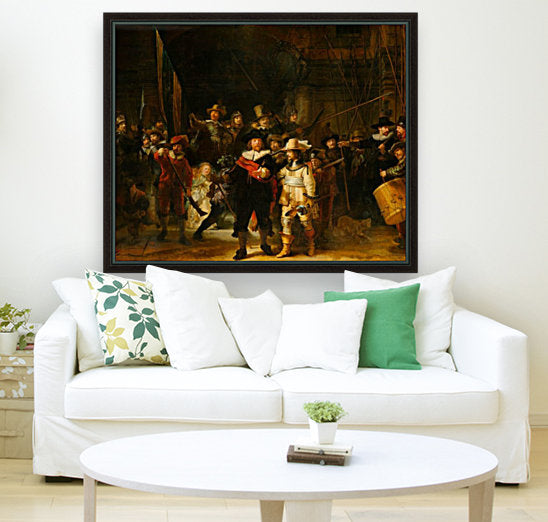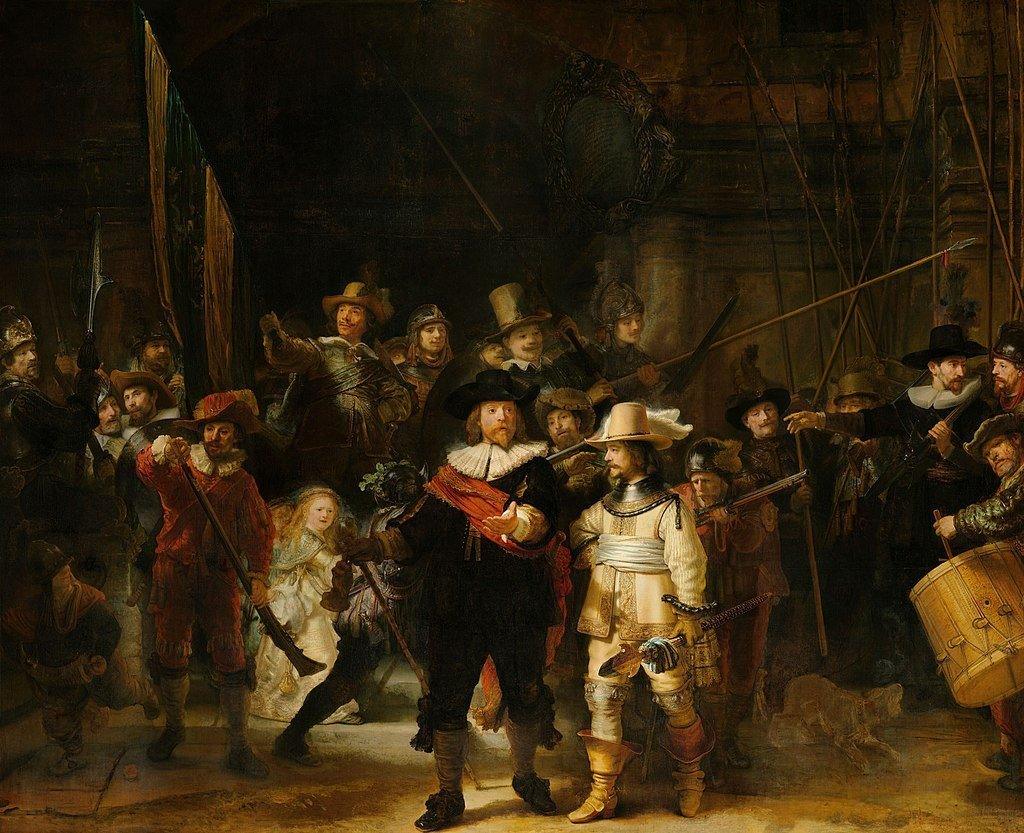Description
Would it surprise you to find out that the title by which Rembrandt's most famous painting is known is actually a fake? The Night Watch is not a night scene at all; it actually takes place during the day. This title, which was not given by the artist, was first applied in the late 18th century.
By then the painting had darkened considerably from the accumulation of many layers of dirt and varnish, giving the appearance that the event occurred at night.
Did The Night Watch lead to Rembrandt's downfall?
A myth has grown around Rembrandt's apparent fall from grace related to this masterful work of art.
Did The Night Watch really lead to Rembrandt's downfall as some have claimed?
Perhaps we can examine the painting, not for clues to a murder conspiracy, but to see how Rembrandt deviated from the norms of a subgenre that was very popular in the new Dutch Republic: the civic militia portrait, or The Scene. from the Guard Room.
Let's talk about its huge size first. The original dimensions of the painting were reduced by a cut. Even with the cut, this is Rembrandt's most masterful composition to date, measuring a whopping 365 x 426 cm.
In this richly hued and eerie masterpiece, in which light is used to give the scene an ethereal quality amidst the usual bustle of movement and action, we detect a certain strangeness, a certain unreality in the scene, even if it is a full painting. of noise.
Rembrandt's The Night Watch is an example of a very specific type of painting that was unique to the northern Netherlands, with the majority commissioned in the city of Amsterdam. It is a group portrait of a company of civic guards. The main purpose of these guards was to serve as defenders of their cities. As such, they were tasked with guarding the gates, guarding the streets, putting out fires, and generally maintaining order throughout the city. In addition, they were an important presence at parades held for visiting royalty and on other festive occasions.
Each company had their own guild hall, as well as a shooting range where they could practice with the specific weapon associated with their group, be it a longbow, crossbow, or firearm. According to tradition, these assembly halls were decorated with group portraits of their most distinguished members, which served not only to record the resemblance of these citizens, but more importantly to affirm the power and individuality of the city they defended. In short, these images helped promote a sense of pride and civic duty.
The name of the painting, The Night Watch, came in the 1790s, when the varnish on the painting had darkened and was dirty enough to appear an eerie twilight night scene.
Rembrandt and The Night Watch - from sunset to glory
Two factors contributed greatly to Rembrandt's troubles in the second half of the century. The artist became more and more extravagant: the great house in which he lived, the curiosities and antiques that surrounded him, the acquisition of fine art. The other aspect had to do with his loose and free handling of the paint.
His style was starting to go out of style. What was coming was the kind of highly polished "fine painting" practiced by the likes of Rembrandt's former student Gerrit Dou, who soon eclipsed his former teacher in terms of fame and success. Rembrandt had to wait until the rise of the Impressionists before he was, in a sense, "re-discovered" and put in his rightful place in art history.
Yet even after this masterpiece was cleaned of that grimy veneer in 1946, the painting has managed to hold on to the sensational mystery that surrounds it.
The Night Watch is ranked no. 4 on the list of famous paintings











